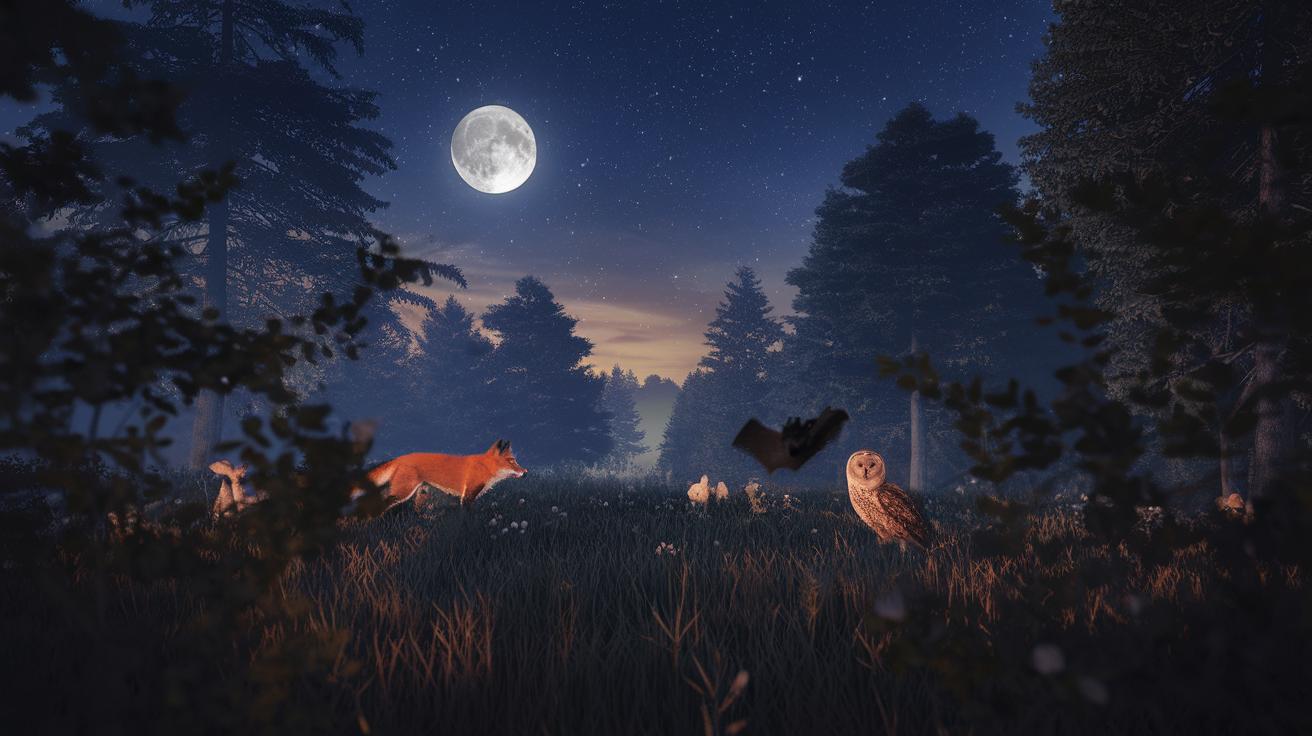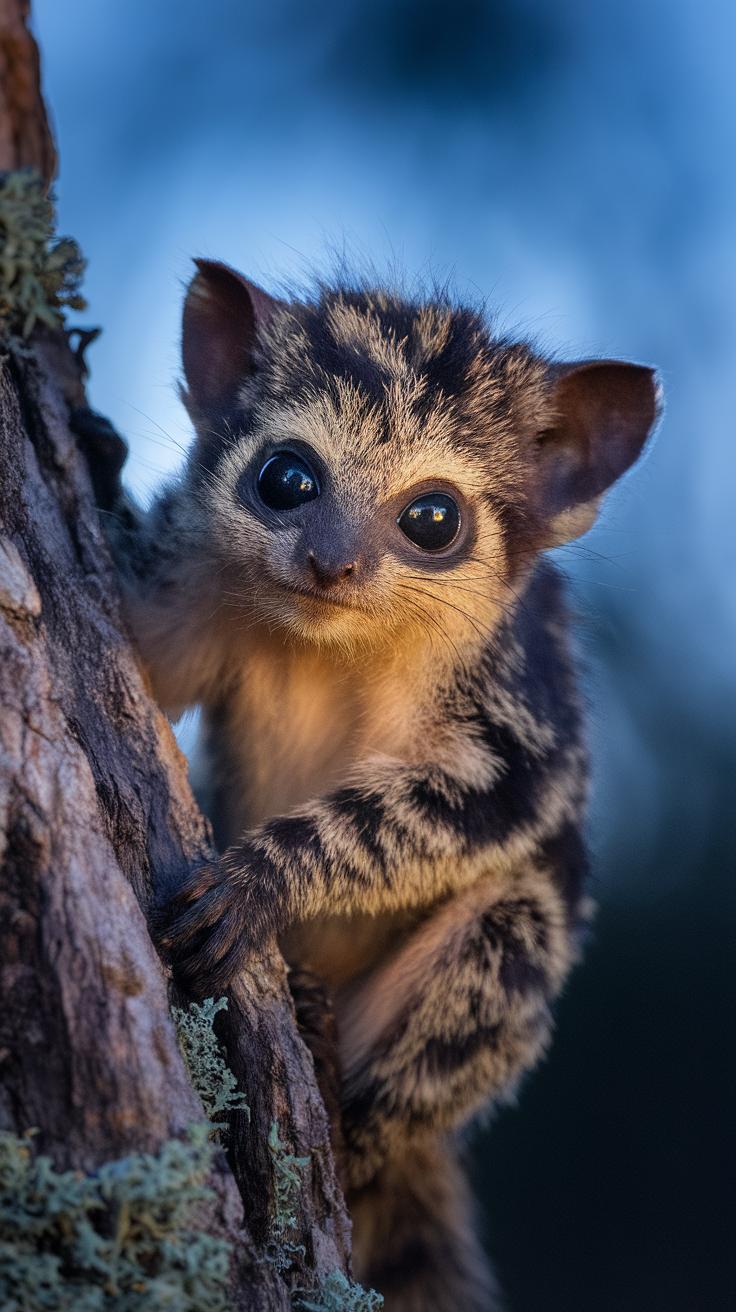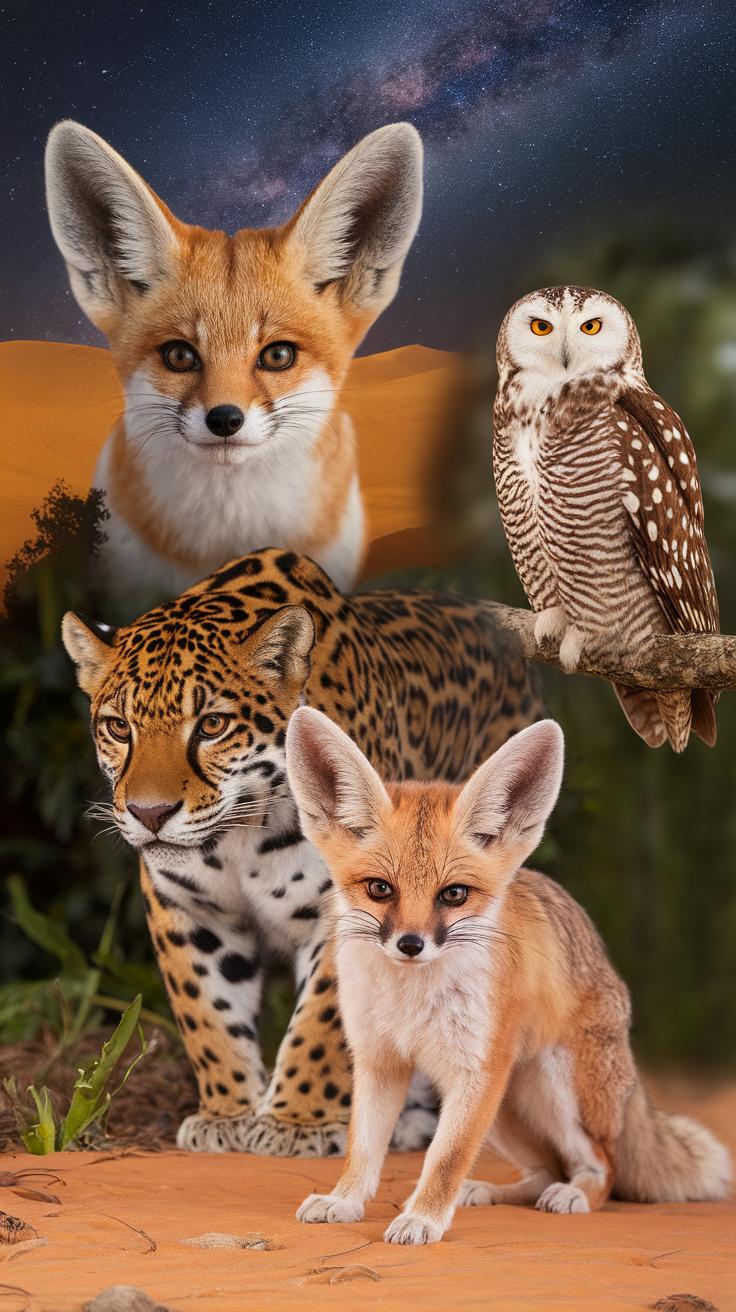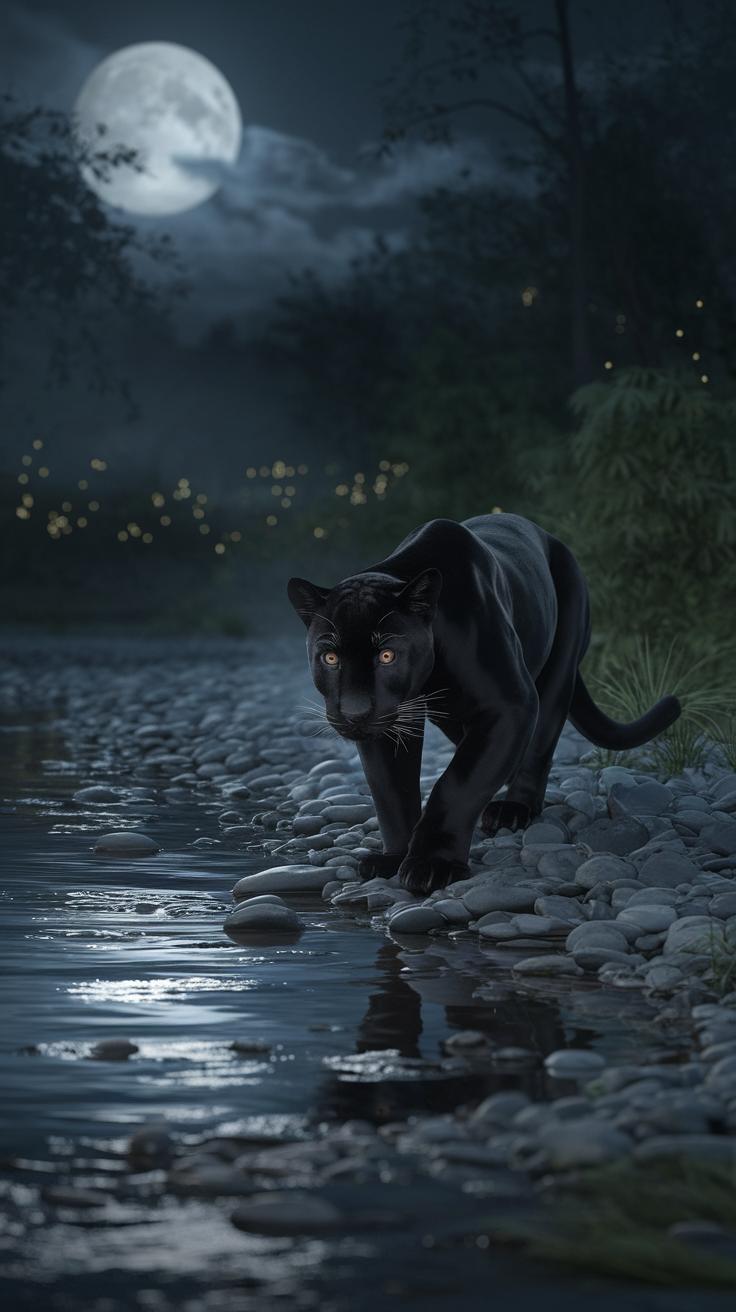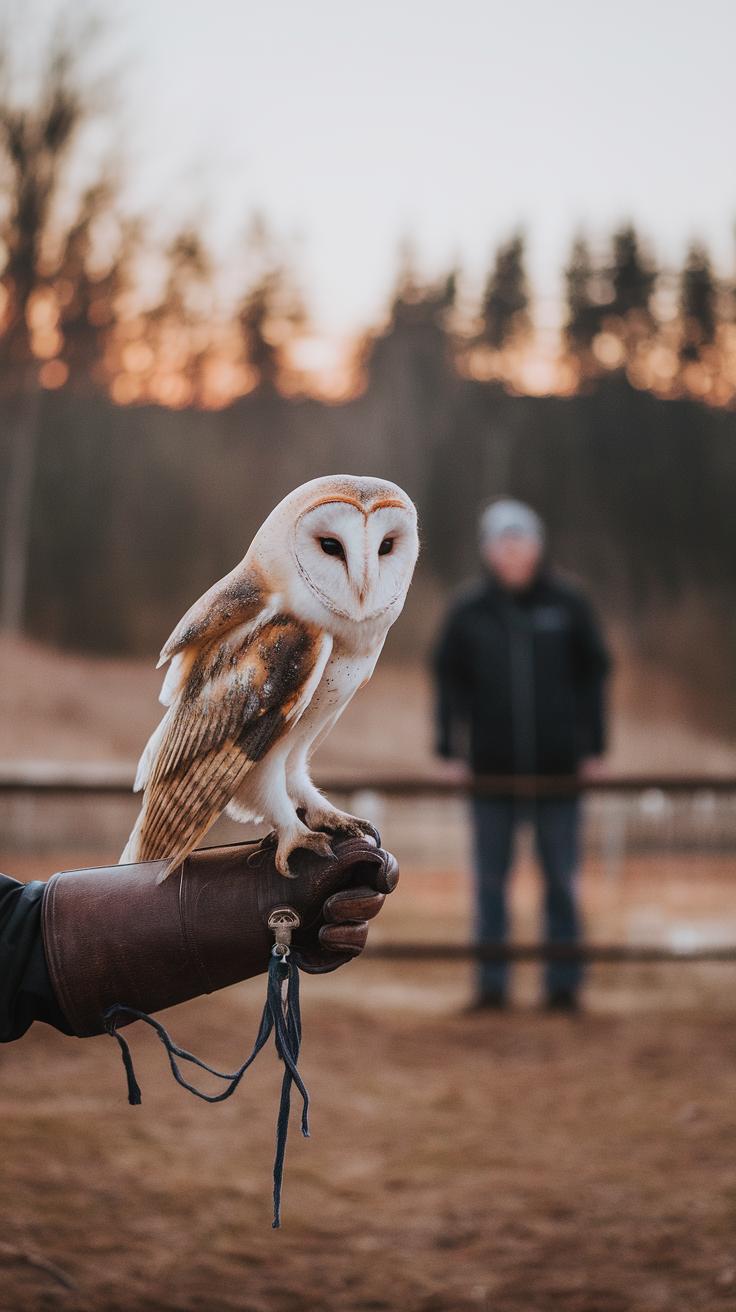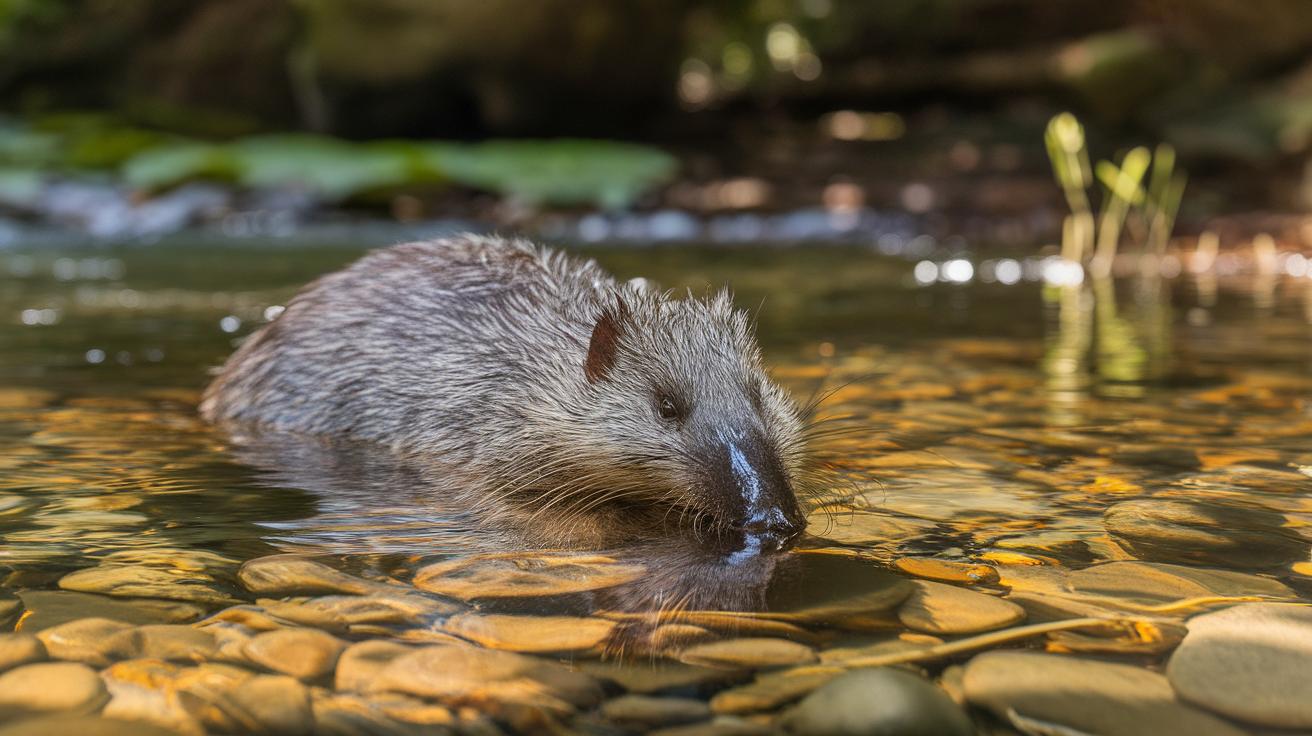Introduction
Nocturnal animals are an intriguing aspect of wildlife, adapted to life under the cloak of darkness. These creatures exhibit a range of behaviors and physical adaptations that enable them to thrive in low-light conditions, from enhanced night vision to acute hearing and other specialized senses. Understanding these animals broadens our appreciation for biodiversity and the various strategies life employs to survive across different environments. The wonders of these nighttime dwellers extend beyond mere survival; they play crucial roles in their ecosystems, contribute to agricultural health, and interact with human societies in complex ways.
This article embarks on a comprehensive exploration of nocturnal animals, delving into their unique adaptations, various species, and their ecological significance. By gaining insight into how these creatures operate under the cover of night, readers can cultivate a deeper understanding of their importance within the broader framework of nature. Through a structured investigation of their lifestyles, habitats, and interactions with other species, we aim to illuminate the remarkable world of nocturnal animals and their nighttime wonders.
Understanding Nocturnal Adaptations
Enhancing Senses for Survival
Nocturnal animals have evolved remarkable adaptations that enable them to thrive in the darkness, where conventional senses may falter. One of the most notable adaptations is enhanced vision, particularly in low-light conditions. Animals such as owls and cats possess a high proportion of rod cells in their retinas, allowing them to detect even the faintest light. This adaptation provides a significant advantage when hunting or navigating their environment after sunset.
In addition to keen eyesight, many nocturnal species exhibit extraordinary hearing capabilities. Bats, for example, employ echolocation, using sound waves to navigate and find prey in complete darkness. Other animals, like the bushbaby, have large external ears that amplify sound, providing them with a heightened sense of auditory perception. These sensory adaptations collectively enhance their ability to locate food and evade predators, ensuring their survival in nocturnal habitats.
Diverse Species of Nocturnal Animals A Look into Various Habitats
Nocturnal animals thrive across numerous environments, exhibiting remarkable adaptations suited for their lifestyles. In forests, creatures such as owls and raccoons showcase their hunting skills under the cover of darkness. Owls, equipped with exceptional hearing and silent flight, have honed their predatory techniques to hunt small mammals and insects efficiently at night. Raccoons, with their dexterous front paws, rummage through foliage for food, demonstrating their adaptability to diverse diets in wooded habitats.
Deserts also host a variety of nocturnal species. The fennec fox, recognized by its large ears and sandy coat, emerges under the cool darkness to hunt for insects and small mammals, conserving energy during the sweltering days. Urban areas have adapted their wildlife, giving rise to nocturnal mammals like opossums and skunks who navigate streetlights and human development in search of food, showcasing their resilience in changing environments.
This diversity demonstrates how nocturnal animals not only adapt their behaviors and physical traits but also play integral roles in maintaining the ecological balance within their respective habitats. As we explore their significant functions in ecosystems, it becomes clear that their nighttime wonders are indeed crucial for sustaining life in diverse environments.
The Role of Nocturnal Animals in Ecosystems
Significance of Nocturnal Creatures
Nocturnal animals occupy crucial roles within ecosystems, contributing to a balanced web of life that supports various species, including plants and other wildlife. By foraging for food at night, these creatures often operate during hours when diurnal animals are inactive, minimizing competition for resources. Predatory species such as owls and bats help regulate populations of small mammals and insects, preventing overgrazing and maintaining healthy plant communities. In turn, herbivores such as raccoons and opossums assist with seed dispersal, ensuring the propagation of diverse flora.
Interconnections Among Species
The interactions between nocturnal animals and their environment further highlight their importance. These creatures often serve as prey for larger nocturnal predators, ensuring that energy flows through the ecosystem. For instance, foxes hunt various small mammals while also controlling their populations, thus fostering a balance. Additionally, nocturnal insects play pivotal roles in pollination after sunset, benefiting night-blooming plants. Such relationships underscore the intricate dynamics of ecosystems, illustrating how nocturnal animals not only adapt to their surroundings but actively shape them for a myriad of species.
Behavioral Patterns of Nocturnal Animals Nighttime Hunting and Mating Rituals
Hunting Strategies of Nocturnal Creatures
At night, many animals exhibit unique hunting strategies that allow them to thrive in darkness. Owls, equipped with exceptional hearing and acute vision, can detect the faintest sounds made by their prey, such as rodents. This ability enables them to silently swoop down and capture their quarry without being detected. Similarly, the African hunting dog employs teamwork while foraging under the moonlight, utilizing their social structures to chase and corner prey. These nocturnal hunters often capitalize on the element of surprise, leveraging the cover of night to ambush unsuspecting targets.
Mating Rituals and Communication Methods
The vibrant courtship behaviors of nocturnal animals are equally fascinating. Fireflies, for example, engage in bioluminescent displays during mating season, flashing their lights to attract partners. Such dazzling performances can attract not only mates but also rivals. Similarly, many nocturnal mammals use specific vocalizations and scents to communicate, asserting territory or signaling readiness to mate. From the howling of wolves to the elusive chirps of crickets, these interactions occur under the veil of darkness, highlighting the adaptability of nocturnal species in their quest for survival and reproduction.
The Impact of Urbanization on Nocturnal Animals
Urbanization’s Effects on Habitats
Urbanization profoundly alters the natural environments where nocturnal animals thrive. The expansion of cities leads to habitat fragmentation, reducing the available space for these creatures to hunt, breed, and communicate. For instance, the rise of roadways and buildings often results in the creation of ‘urban canyons,’ where sound and light pollution disrupt the natural behaviors of animals such as owls and bats. A notable case is the decline of the common urban fox, which has had to adapt to the ever-changing landscape, often scavenging in unsuitable areas that compromise its health and survival.
Behavioral Adaptations and Challenges
As nocturnal animals encounter urban settings, they exhibit altered behaviors to cope with human disturbances. Nocturnal predators like raccoons have adapted to become more opportunistic feeders, foraging around trash cans instead of pursuing their natural prey. A study in Chicago revealed that these animals have adjusted their activity patterns to avoid peak human activity times, demonstrating both resilience and the challenges posed by urban lifestyles. While some species manage to thrive, others face significant risks, reminding us of the delicate balance that urbanization disrupts in the lives of these fascinating nocturnal beings.
Conservation Challenges for Nocturnal Animals
Threats from Climate Change and Habitat Loss
Many nocturnal animals face serious conservation challenges largely due to climate change and habitat destruction. Shifts in temperature and weather patterns can disrupt their food sources, breeding cycles, and migratory routes. For instance, warmer climates have been shown to alter the activity patterns of certain species, leading to mismatches with prey availability. Habitat destruction caused by urban expansion and deforestation further compounds these issues, fragmenting environments and isolating populations. Species reliant on specific nighttime habitats, such as bat roosts or arboreal dens, struggle to adapt as the landscape changes.
Poaching and Human Interference
Poaching remains a significant threat to many nocturnal creatures. These animals are often targeted for their unique skin, meat, or even for the exotic pet trade. The demand for nocturnal species places immense pressure on their populations, pushing some to the brink of extinction. Human interference can also exacerbate these challenges. Light pollution disrupts their natural behaviors, making it increasingly difficult for them to hunt or evade predators. The cumulative effects of these factors necessitate urgent conservation efforts to protect nocturnal wildlife and maintain ecological balance.
Human Interactions with Nocturnal Animals Folklore Urban Coexistence and Ecological Importance
Folklore and Cultural Significance
Many cultures around the world have woven rich tapestries of folklore surrounding nocturnal animals. Creatures like owls and bats often embody symbolism, reflecting wisdom or transformation. In ancient times, these animals were revered, feared, or depicted in myths, illustrating humanity’s long-standing fascination with their enigmatic behaviors. Stories of shape-shifters and spirit guides frequently feature these nighttime dwellers, illustrating how they enrich cultural narratives and traditions. The owl, notably, has been a symbol of knowledge and insight, often linked to the goddess Athena in Greek mythology, underlining the profound connections drawn between humans and the night’s most intriguing inhabitants.
Urban Coexistence and Ecological Importance
Nocturnal animals play indispensable roles in urban ecosystems, such as pest control and pollination. As cities expand, many nocturnal species adapt well, showcasing resilience. Urban settings often provide unique opportunities for these animals, leading to interesting interactions with residents. People are increasingly encountering raccoons rummaging through garbage or spotting foxes in parks, highlighting a coexistence that’s both fascinating and challenging. These encounters serve as a reminder of the ecological balance that nocturnal creatures maintain, emphasizing the need for urban planning that considers wildlife needs. Creating green spaces and minimizing light pollution are crucial steps to ensuring that both humans and nocturnal animals can thrive together.
The Future of Nocturnal Animals Adapting to Environmental Change
Challenges and Threats to Nocturnal Species
The future of nocturnal animals is increasingly uncertain as they confront a range of environmental challenges. Climate change, habitat loss, and light pollution are profoundly affecting their behaviors and habitats. Many nocturnal species, such as bats and owls, rely heavily on their unique adaptations to thrive in low-light conditions. Disruption of their habitats leads to decreased food availability and increased competition with diurnal species, potentially leading to diminishing populations. Urbanization further complicates their survival as cities expand and invade previously undisturbed ecosystems.
Research and Conservation Directions
Proposed strategies for the conservation of nocturnal species should prioritize habitat preservation and restoration, ensuring that essential ecosystems remain intact. Research focusing on how these animals utilize their environments will enhance our understanding of their needs and adaptations. Advocacy for reduced light pollution can improve nocturnal activity patterns, helping species coexist alongside human development. Collaboration between conservationists, urban planners, and researchers is vital in creating environments that support both human societies and the intricate lives of nocturnal wildlife.
Conclusions
Summarizing the journey through the intriguing lives of nocturnal animals reveals a mosaic of adaptations and behaviors that enhance survival in darkness. From the silent flight of owls to the keen senses of raccoons, these creatures showcase nature’s resilience and ingenuity. Their roles in ecosystems, ranging from pest control to seed dispersal, highlight the interdependence within food webs and the importance of biodiversity. Recognizing their contributions lays foundations for conservation efforts and fosters respect for the delicate balance of life.
Nocturnal animals encapsulate the mysteries of the night, encouraging us to reevaluate our perceptions of wildlife and their habitats. By observing and understanding these nocturnal wonders, we not only appreciate their existence but also acknowledge the pressing need to protect their environments. Embracing the unique qualities of these creatures will enrich our connection to the natural world and inspire efforts to safeguard the delicate ecosystems they inhabit.

